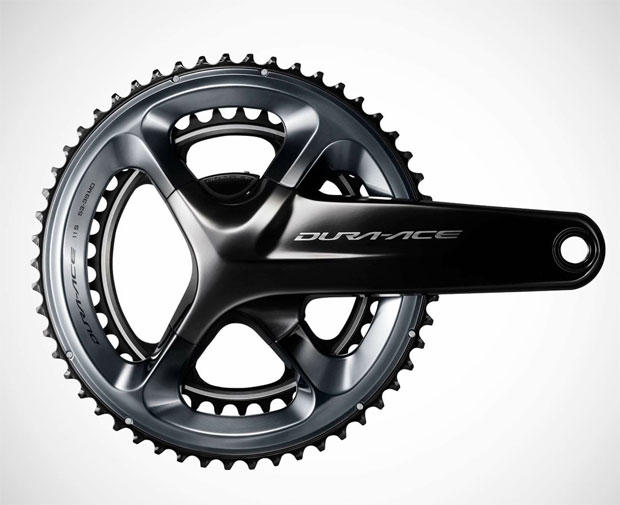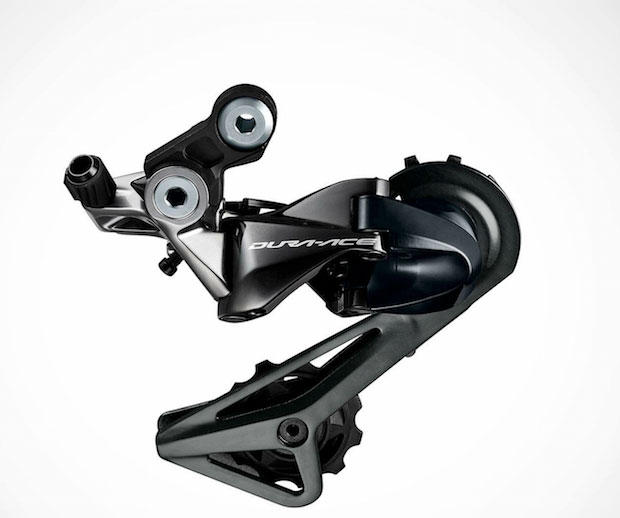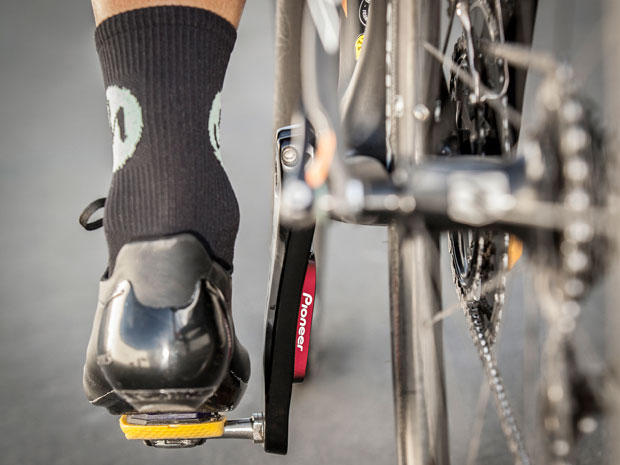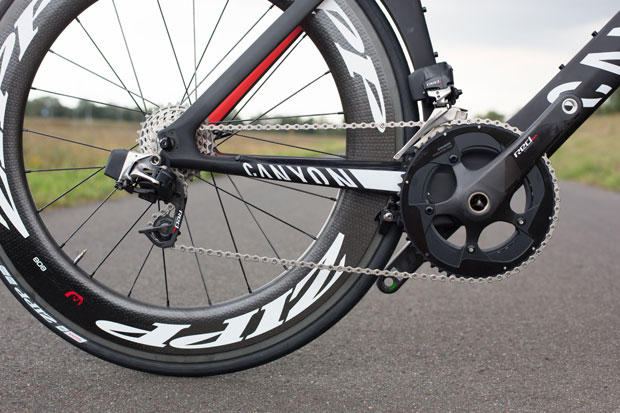Shimano R9100 (Power Meter!)
Shimano officially announced the release of its new Dura-Ace R9100 road components, with the highlights being the the first integrated power meter, hydraulic braking, and synchronized shifting.
The R9100 series also includes upgrades to both mechanical and Di2 electronic components (R9150) along with new pedals and wheelsets.

Shimano’s first addition to the power meter market might be considered the most interesting, but not surprising, with most of the other component manufacturers already producing power meters. Shimano is calling the FC-R9100-P the most sophisticated and accurate available. It will provide left and right-leg power along with cadence. The strain gauges are inside the crank arms, connected via an internal wire, while the receiver (i.e., brain) is inside the spider, similar to the Pioneer power meter.
This power meter’s theme, the metrics it produces, should not be surprising to those following Shimano’s work. Look at the power charts on our write-up of Shimano’s fit bike almost 3 years ago.

Because of the location of the strain gauges, users can swap chainrings without affecting the accuracy of the power meter. Other features include the ability to check the system, or update firmware, via a mobile device and the use of an integrated, rechargeable battery. It is also reported to have both Ant+ and Bluetooth connectivity, but there are no details on data transmission as it is plausible that Bluetooth may be used for firmware/status updates only. Of note, because the power meter is integrated inside the crankset, it will not be available as an aftermarket upgrade.
Shimano is also upgrading its E-Tube project with the planned release of an iOS and Android app that will connect to a new wireless unit (EW-WU111), and new battery that will allow for Di2 programming (e.g., customized shifting) without the need for a connection to a Windows computer. The customized shifting ability includes the release of their synchronized shifting option, already found on Shimano’s XTR groupset, where the front derailleur can shift according to the rear gearing to minimize cross-chaining. The new wireless unit will also transmit Di2 data (e.g., battery life) to compatible cycling computers. Those who already have Di2 using E-Tube will be able to upgrade to the new system.
Shimano also updated its front and rear derailleurs, again borrowing from the XTR models. The major differences lie in the rear derailleur with a trimmed down and lighter design that should reduce the chance of damage in a crash. The rear derailleur will also support Shimano’s new 30-tooth cassette, an update from the 28t in the 9000 series.

Some of the other noticeable updates included in the 9100 series are the improved ergonomics of the shifters with noticeable difference between the mechanical and hydraulic brake versions. The TT shifters were greatly reduced in size with the extension plug shifters (SW-R9160) appearing to mirror the eTap version and the brake lever shifters were also reduced in size and weight. Shimano also states it invested heavily in upgrading its wheelsets with wider, stiffer, faster versions. The C40 and C60 models are available in either clincher or tubular models (C40 is also tubeless) and disc or rim brake.
Of note, Slowtwitch hasn’t yet officially seen any these components and is relying on information being reported. We hope to get our hands on a group set in the new year to see how it compares to SRAM’s eTap and to test the new power meter. Shimano is reporting a release date of early 2017 and pricing is not yet available.



